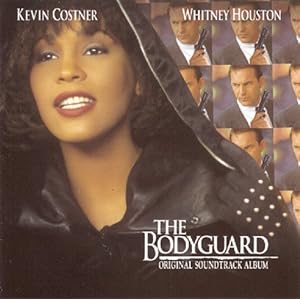
 Whitney Houston, 1963-2012
Whitney Houston, 1963-2012
Whitney Houston has died at the age of 48. Best known for hits "I Wanna
Dance with Somebody (Who Loves Me)" and "So Emotional," Houston is the
only artist to consecutively chart seven No. 1 hits. During her
illustrious career she earned 415 awards, making her the most-awarded
female music artist of all time. Houston paved the way for female
vocalists and will endure as one of music’s most beloved voices...Read more in Amazon's Whitney Houston Store
Community biography from 
During the 80s and 90s, Whitney Houston was
an unstoppable force in pop music. With sales estimated to exceed 200
million records, she is one of the biggest-selling female singers ever.
Whitney
Houston was born to a family with impressive singing credentials - her
mother was gospel singer Cissy Houston, her cousin was five-time Grammy
winner Dionne Warwick, and her godmother was the 'Queen of Soul'
herself, Aretha Franklin. Her first break came when she sang backing
vocals on Chaka Khan’s “I’m Every Woman” when she was only 16. She
continued to record, sing and tour with her mother, but although she was
offered recording contracts she turned them all down until, in 1983,
she signed with Arista.
Her debut album Whitney Houston
appeared in 1985 but it was not an instant hit. However, due to the
singles “Saving All My Love for You” (which won a Grammy), “How Will I
Know” and “Greatest Love of All”, it eventually reached the top of the
Billboard charts and lodged there for several weeks. Critical praise,
awards, television shows and massive sales ensured a grand entrance into
the music world for new superstar Whitney Houston.
Her follow-up album was 1987’s nine-times platinum Whitney.
It debuted at the top of the charts in many countries and the success
of the singles “I Wanna Dance with Somebody (Who Loves Me)”, “Didn’t We
Almost Have it All”, “So Emotional” and “Where do Broken Hearts Go” gave
her a record of achieving seven consecutive singles at No.1.
In response to an enduring criticism that she was somewhat bland, she experimented with a more urban feel on her next release. I’m Your Baby Tonight
(1990) found her exploring her versatility as an artist, with a fair
degree of success. The album was certified four-times platinum.
Her next endeavor was her acting debut in The Bodyguard.
It was a huge box-office hit and the accompanying soundtrack album went
on to achieve 17x platinum certification in the US alone. The lead
single from the album was a cover of Dolly Parton’s “I Will Always Love
You” which cemented itself to the top of the charts in many countries.
Her next two releases were soundtrack albums, Waiting to Exhale (to which she contributed three songs) and The Preacher's Wife, both of which were supporting films in which she had acting roles.
In 1998 she released My Love is Your Love which continued her exploration of urban sounds such as hip-hop and reggae. Two years later she released Whitney: the Greatest Hits, but unfortunately this marked a slide in her fortunes. When Just Whitney
was released in 2002 it received poor reviews and the singles failed to
chart well. She followed it with a Christmas-themed record, One Wish: the Holiday Album,
which performed even less well. Since then, column inches have been
dedicated to her battles with drugs, and with her husband Bobby Brown
(whom she had married in 1992 after a 3 year courtship and divorced in
2007).
In Memorial :
In Memorial :

The"Thriller" of the 90's.Just perfect, June 21, 2001
By
Bob Waskiewicz (Wintersville, Ohio United States)
This review is from: The Bodyguard: Original Soundtrack Album (Audio CD)


